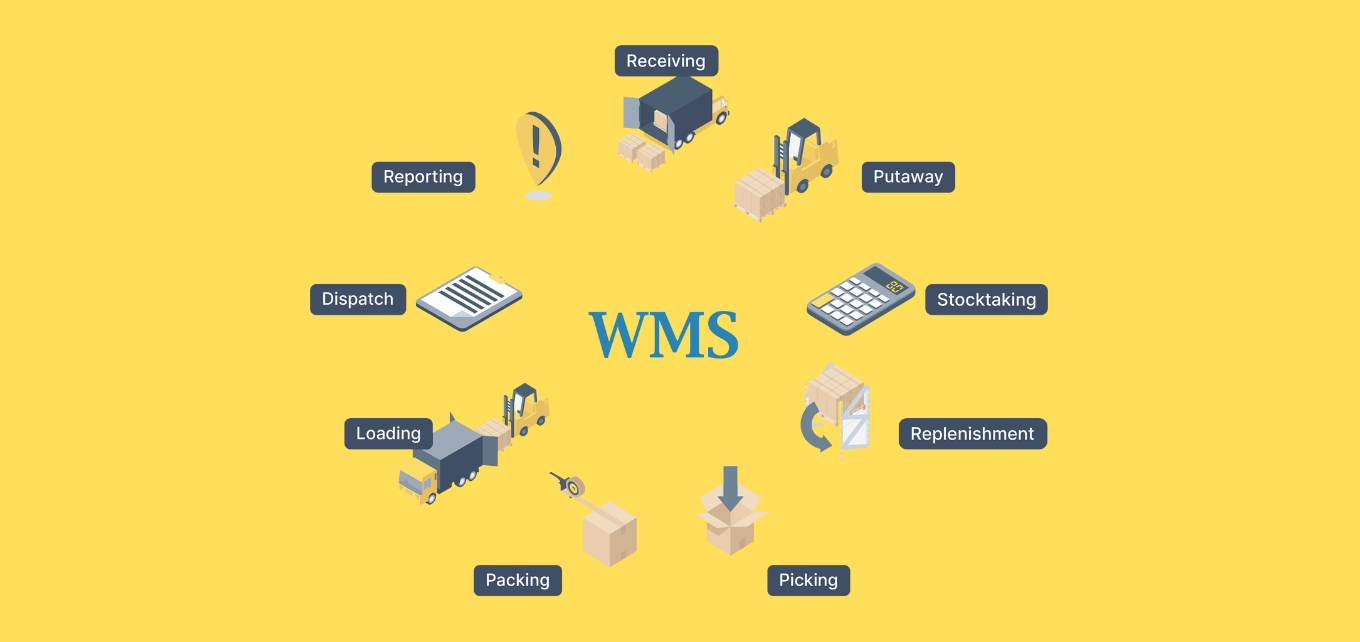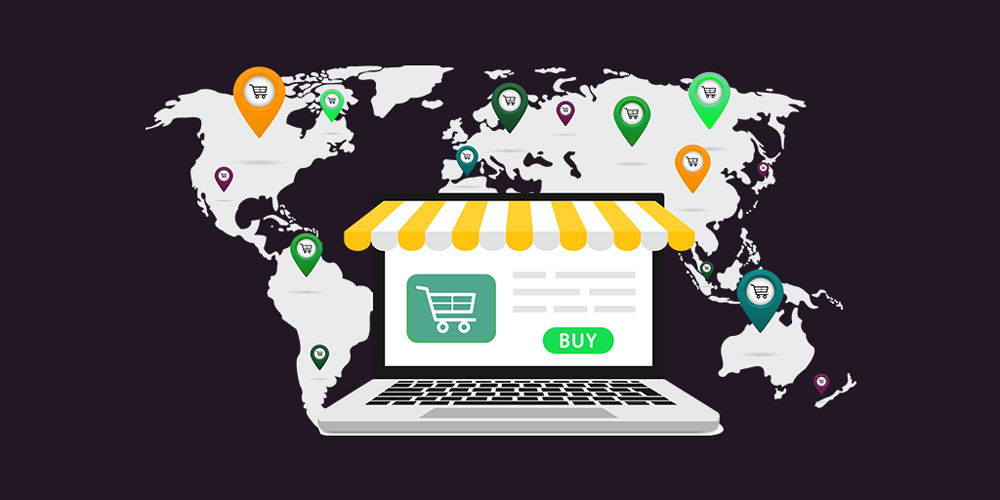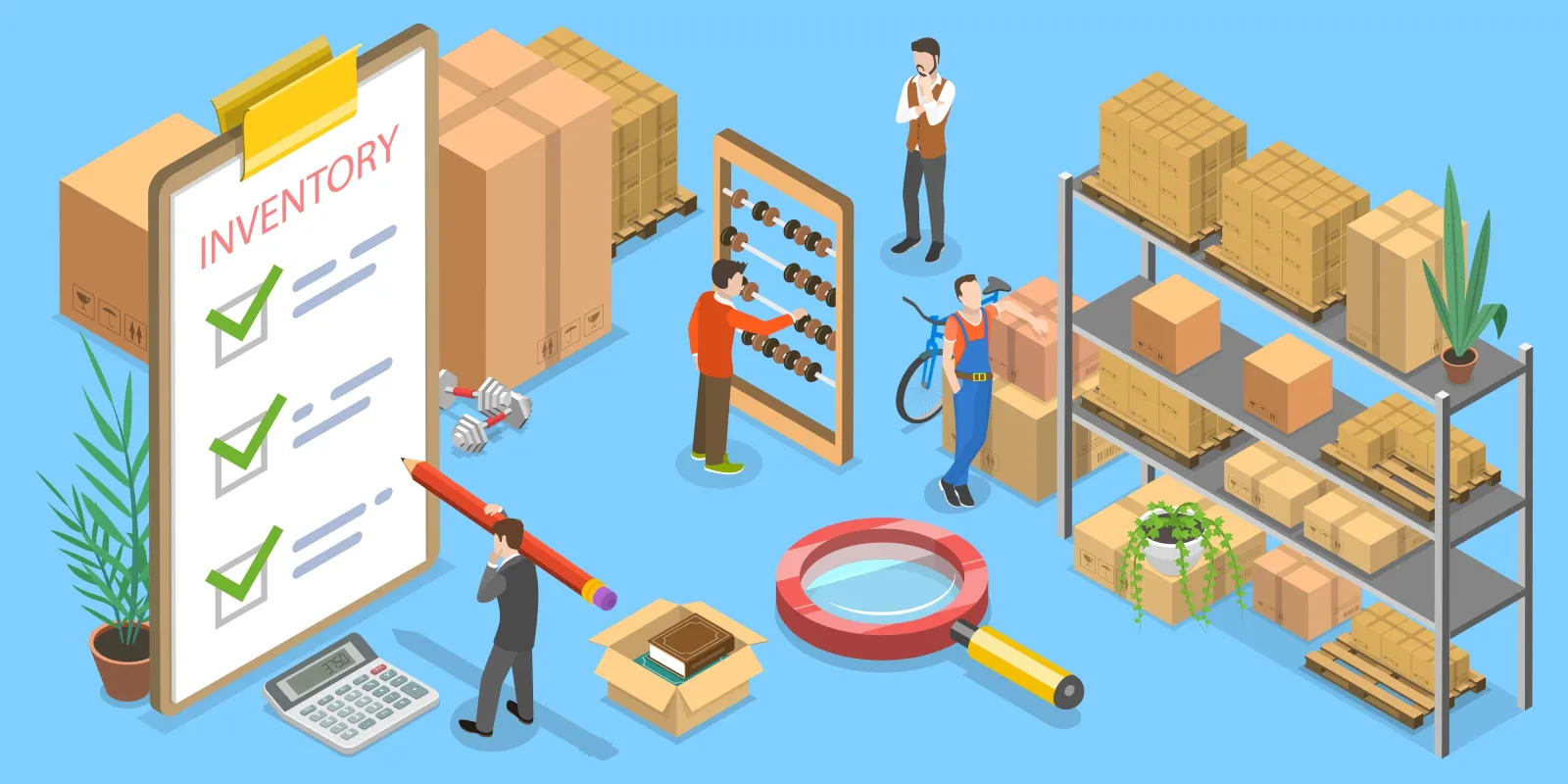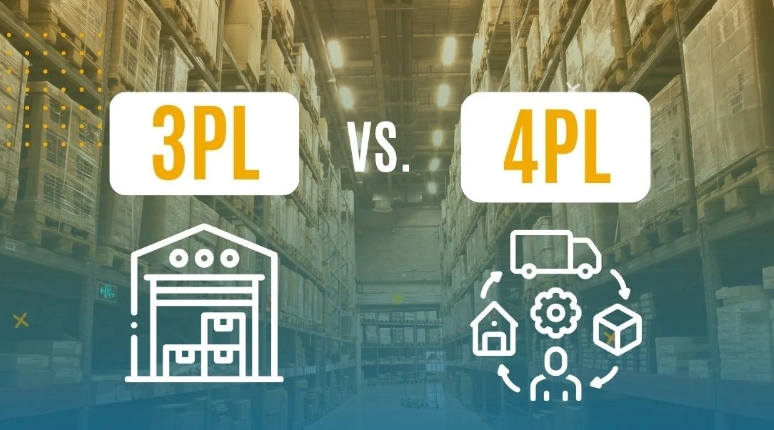Benötigt Ihr kleines Unternehmen ein Lagerverwaltungssystem(WMS)?
Die effiziente Verwaltung von Lagerbetrieben ist nicht nur ein Problem großer Unternehmen. Das bedeutet aber nicht, dass ein kleines Unternehmen automatisch ein Lagerverwaltungssystem (WMS).
Wenn Sie weniger als 2.000 Paletten haben und eine moderate Anzahl von SKUs verwaltenMit Hilfe von Tabellenkalkulationen, festen Ablagesystemen und guter Teamdisziplin ist es dennoch möglich, organisiert zu bleiben. Allerdings ist die Komplexität - und nicht nur die Größe - ein entscheidender Faktor. Wenn Sie mit 500+ SKUsdie Ausführung von Aufträgen über verschiedene Kanäle wie Shopify, WooCommerceund Großhandel, oder Laufen mehr als ein LagerhausManuelle Systeme werden schnell unbrauchbar.

Hier kann ein WMS einen echten Unterschied machen - allerdings nur, wenn das Unternehmen wirklich bereit dafür ist.
Viele Teams sträuben sich gegen die Einführung von WMS, weil sie alte Gewohnheiten ändern müssen. Doch das Festhalten an veralteten Prozessen schadet der Effizienz - vor allem in kleinen Lagern.
Die Lösung? Ein leichtgewichtiges WMS wie PostalParcel (Cloud-basiert/WP-gestützt), die:
- Passt sich an Ihr Arbeitsablauf (nicht umgekehrt)
- Integriert sich nativ mit Shopify/WooCommerce
- Erschwingliche Skalierung bei Wachstum
Kein aufgeblasenes Unternehmen. Kein "das haben wir schon immer so gemacht". Nur moderne Logistik, die funktioniert.
Wenn sich die Vorlaufkosten oder Prozessänderungen überwältigend anfühlen, ist Ihr Unternehmen möglicherweise noch nicht bereit - aber achten Sie auf den Wendepunkt: Wenn verzögerte Bestellungen und ein Chaos im Lagerbestand auftreten, ist ein WMS nicht mehr optional.
Warum die Effizienz des Lagers für kleine Unternehmen wichtig ist
Für kleine Unternehmen, insbesondere solche, die auf Shopify, WooCommerceoder anderen E-Commerce-Plattformen wirkt sich die Lagerleistung direkt auf die Rentabilität aus. Verzögerungen, Fehler oder Fehlbestände können das Vertrauen der Kunden beeinträchtigen und die Kosten in die Höhe treiben.
Im Gegensatz zu Unternehmen mit großen Teams brauchen kleine Unternehmen schlanke Abläufe. Ein gut implementiertes WMS reduziert die Verschwendung, verbessert die Genauigkeit und bietet Echtzeittransparenz, was intelligentere Entscheidungen und erhebliche Gewinnspannen ermöglicht.
Brauchen Sie ein WMS oder nur eine bessere Lagerdisziplin?
Warnzeichen dafür, dass manuelle Systeme überflüssig werden
Fragen Sie sich selbst:
- Kommt es häufig zu Fehlbeständen oder Überbeständen?
- Verbringen Ihre Mitarbeiter zu viel Zeit mit der Suche nach Artikeln?
- Verwalten Sie mehrere Standorte manuell?
- Nimmt die SKU-Komplexität zu?
- Steigen die Arbeitskosten ohne bessere Ergebnisse?
- Beschweren sich die Kunden über die Auftragsabwicklung?
Manuelle Systeme reichen nicht aus, wenn Sie mehr als 2.000 Paletten oder 500+ SKUs verwalten.
Alternativen, bevor Sie sich für ein WMS entscheiden
WMS ist nicht immer die Lösung. Versuchen Sie diese zuerst:
- Feste Kommissionierkästen: Geben Sie jeder SKU ein Zuhause.
- Überlaufkarten: Papierverfolgung für Überbestände.
- Zykluszählungen: Routinemäßige Prüfungen zur Feststellung von Unstimmigkeiten.
Wenn Sie immer noch nicht mithalten können, ist es vielleicht an der Zeit, ein skalierbares Lagerverwaltungssystem zu evaluieren.
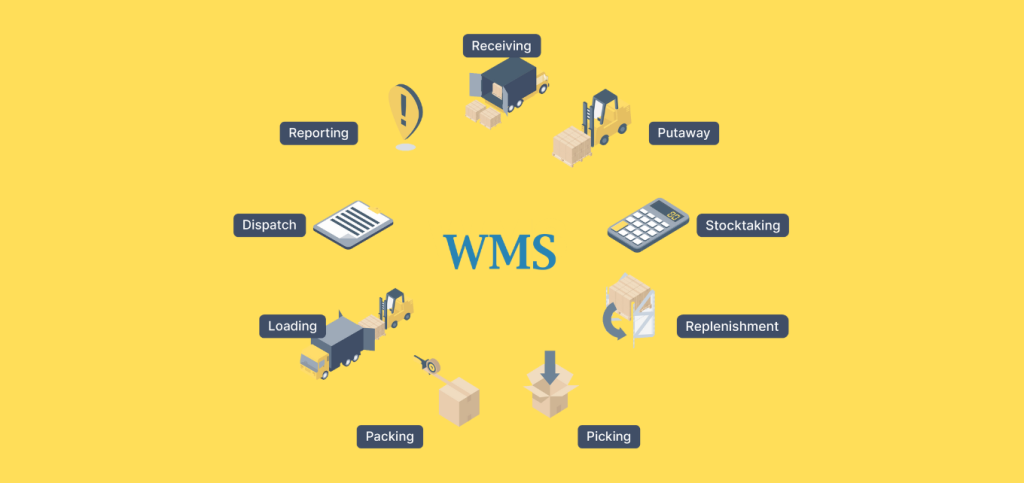
Warum sollten Sie die Einführung eines WMS in Betracht ziehen?
Manuelle Prozesse lassen sich nicht gut skalieren
Ein Lagerhaus zu verwalten, mag anfangs funktionieren. Aber wenn Sie es mit:
- Mehrere Vertriebskanäle (Shopify, WooCommerce, B2B)
- Mehr als ein paar hundert SKUs
- Über 1.000 Paletten auf Lager
Sie werden auf Ineffizienzen stoßen. Fehler häufen sich, die Abwicklung wird langsamer, und Fehlbestände werden zur Routine.
Vorteile der Lagerautomatisierung
- Verbesserte Genauigkeit: Durch das Scannen von Barcodes werden menschliche Fehler minimiert.
- Schnellere Erfüllung: Optimierte Kommissionierwege und Live-Updates erhöhen die Geschwindigkeit.
- Kosteneinsparungen: Reduziert den Zeitaufwand für die Korrektur von Fehlern.
- Skalierbarkeit: Wächst mit Ihrem Auftragsvolumen.
Erhöhte Kundenzufriedenheit
Schnelligkeit und Genauigkeit fördern die Kundentreue. A WMS ermöglicht einen schnelleren Versand, genaue Online-Bestände und weniger Fehler bei der Abwicklung.
Anzeichen dafür, dass es Zeit ist, Ihr aktuelles WMS aufzurüsten
Sie haben bereits ein WMS, aber:
- Es fehlen Shopify- oder WooCommerce-Integrationen
- Sie erhalten keine Echtzeit-Verfolgung
- Multi-Channel-Verkauf ist schwierig
- Die Berichterstattungsinstrumente sind schwach oder nicht vorhanden
- Es verlangsamt Ihr Team, anstatt es zu beschleunigen.
Erwägen Sie den Wechsel zu einem besser geeigneten System.
Welche Unternehmen profitieren am meisten von einem WMS?
Diese Art von Unternehmen profitiert am meisten von einem WMS:
- E-Commerce-Geschäfte: Shopify-, WooCommerce- oder Amazon-Verkäufer mit hohem SKU zählt
- 3PL-Anbieter: Präzision und Verfolgung sind nicht verhandelbar
- Hersteller: Nachverfolgung von Stücklisten und Rohstoffen ist unerlässlich
- Vertriebshändler: Umfangreiche Bestände und komplexer Versand erfordern Kontrolle
Welche Funktionen sollte ein gutes Lagerverwaltungssystem haben?

1. Bestandsverwaltung in Echtzeit
- Verfolgung von Bewegungen in verschiedenen Lagern
- Aktienwarnungen erhalten
- Häufiges Zählen der Zyklen aktivieren
2. Tools für die Lageroptimierung
- Geschickte Platzierung der Behälter/Gänge
- Optimierte Kommissionierrouten
- Verwaltung von Speicherzonen
3. Verwaltung von Kundenaufträgen
- Automatisieren Sie Kommissionierung und Verpackung
- Synchronisierung von Bestellungen aus Shopify und WooCommerce
- Erfüllungswarteschlangen priorisieren
4. Stücklisten-Unterstützung
- Rohstoffe überwachen
- Verfolgen Sie montierte SKUs
- Unverzichtbar für Hersteller
5. Integrationen
- Shopify, WooCommerce, Amazon
- NetSuite, Odoo, und andere ERPs
- Barcode-Lesegeräte und Logistik-APIs
Warum sollten Sie sich für das WMS von PostalParcel entscheiden?
PostalParcel bietet kleinen Unternehmen eine leistungsstarke und dennoch zugängliche WMS-Lösung, die sich in fünf Schlüsselbereichen auszeichnet:
- Shopify/WooCommerce-Integration: Nahtlose Verbindung mit führenden E-Commerce-Plattformen, genau wie andere WMS-Systeme.
- Multi-Warehouse-Unterstützung: Vollständige Unterstützung der Bestandsverfolgung über mehrere Standorte hinweg - vergleichbar mit allgemeinen und unternehmensweiten Systemen.
- Unterstützung für benutzerdefinierte Workflows: Im Gegensatz zu vielen generischen Lösungen ermöglicht PostalParcel den Unternehmen die Definition von Arbeitsabläufen, die auf ihren Betrieb zugeschnitten sind.
- Erschwinglich für SMBs: WMS-Plattformen für Unternehmen können unerschwinglich teuer sein. PostalParcel ist preislich auf kleine und wachsende Unternehmen ausgerichtet.
- Stückliste/Fertigungsmerkmale: Umfassende Unterstützung für Stücklisten, die es Herstellern ermöglicht, Komponenten und Baugruppen effektiv zu verwalten.
PostalParcel wurde entwickelt, um kleinen Unternehmen Funktionen auf Unternehmensniveau zu bieten - ohne die Komplexität oder Kosten.
Abschließende Überlegungen
A Lagerverwaltungssystem ist nicht nur für große Unternehmen geeignet, sondern auch für Unternehmen, die skalieren wollen. Wenn Sie mit Hunderten von Artikeln, mehreren Vertriebskanälen und wachsender betrieblicher Komplexität jonglieren, ist es an der Zeit, sich von Tabellenkalkulationen zu verabschieden.
PostalParcel bietet ein schlankes, cloudbasiertes WMS, das auf kleine Unternehmen zugeschnitten ist. Es lässt sich in Shopify und WooCommerce integrieren, unterstützt die Stücklistenverfolgung, ermöglicht Transparenz auf Lagerebene und wächst mit Ihren Anforderungen - ohne den Ballast eines Unternehmens.
Verwenden Sie immer noch manuelle Systeme? Achten Sie auf die Anzeichen: verzögerte Bestellungen, Lagerausfälle und Chaos bei der Auftragsabwicklung. Das ist Ihr Schwellenwert.
Warten Sie nicht, bis der Betrieb zusammenbricht. Wählen Sie ein WMS, das mit Ihnen wächst - und nicht eines, das Sie ausbremst.
Einblicke in die Industrie
Nachrichten über den Posteingang
Nulla turp dis cursus. Integer liberos euismod pretium faucibua

